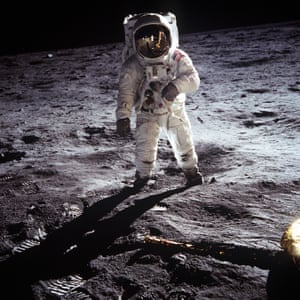The greatest photos ever? Why the moon landing shots are artistic masterpieces // 'We had 15 seconds of fuel left': Buzz Aldrin on the nervy moon landing
Fifty years ago this week, a former navy pilot created one of the most
revolutionary artistic masterpieces of the 20th century, one we have yet to
fully assimilate. His name was Neil Armstrong and
his astonishing act of creativity is a photograph of his Apollo 11crewmate Buzz Aldrin standing
on the Sea of Tranquillity on the moon. Not that you can see Aldrin’s face. His
features and flesh are hidden inside a thickly padded white spacesuit, its
visor reflecting the tiny figure of Armstrong himself, beside the gold-coloured
legs of the lunar lander.

NASA
This effacement of Aldrin came about because Apollo astronauts wore
visors lined with gold to protect their eyes from sunlight. Yet these
reflective qualities are part of what makes this such a powerful, complex
image, one in which we can see two lunar horizons. Behind Aldrin, the moon’s
bright surface recedes to a blue horizon against the black void of space.
Meanwhile, reflected and warped by the helmet, the other horizon stretches away
behind Armstrong. The photographer has incorporated the making of the image
into the image, to tell the story of something new in the universe: two human
beings looking at each other across the dusty surface of an alien world…

AFP/Getty
read
more... https://www.theguardian.com/artanddesign/2019/jul/17/greatest-photos-ever-moon-landing-shots-artistic-masterpieces
'We had 15 seconds of fuel left': Buzz Aldrin on the nervy moon landing
